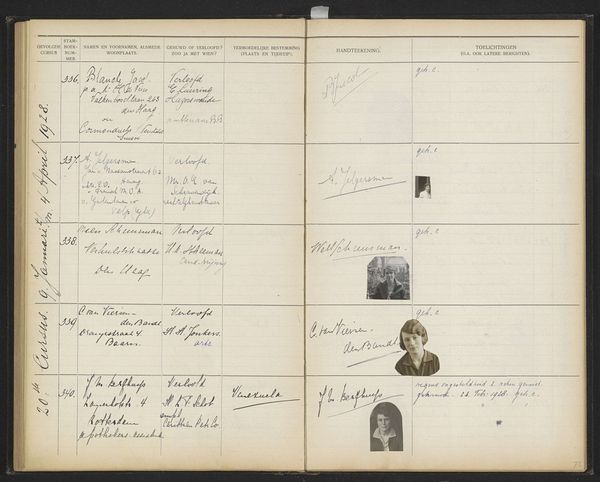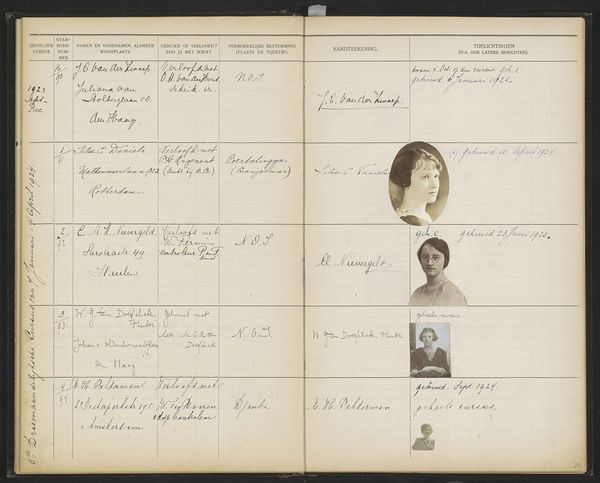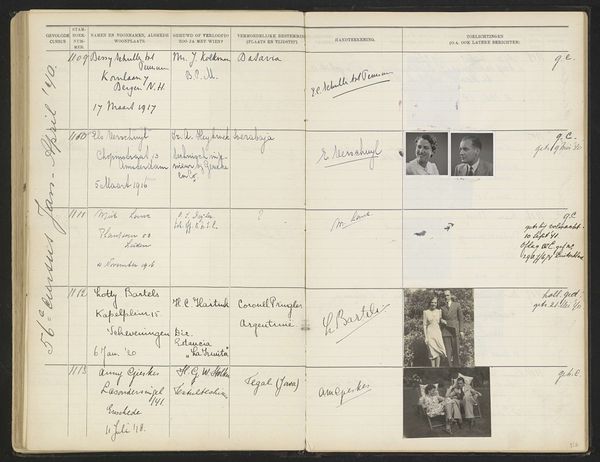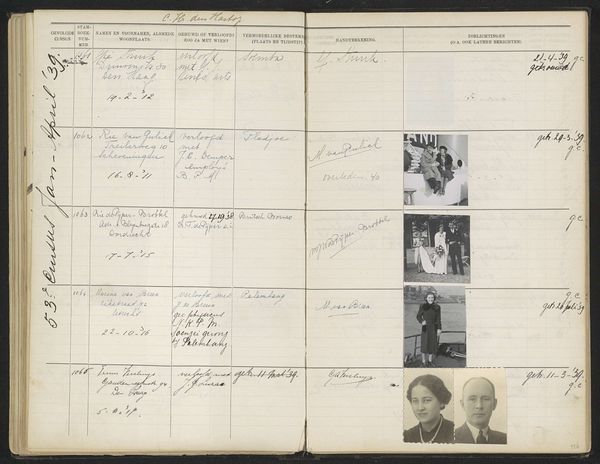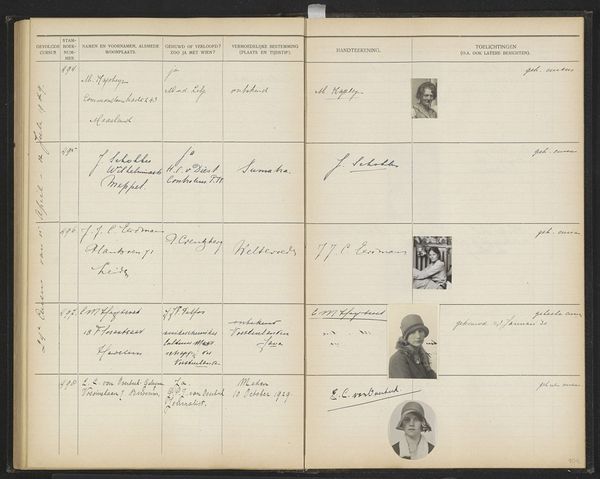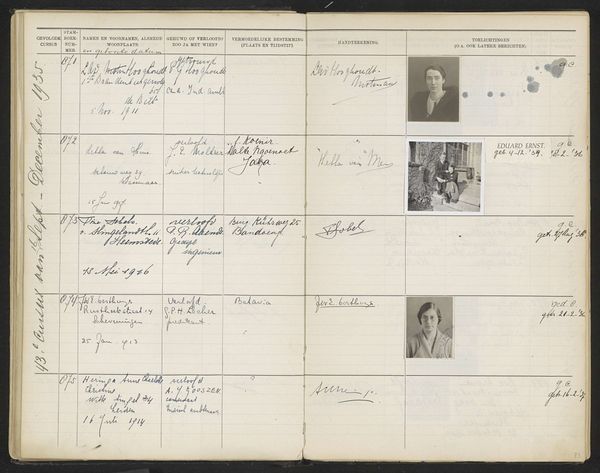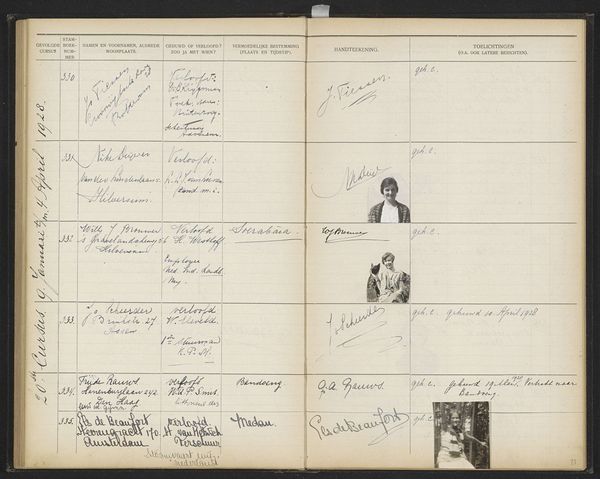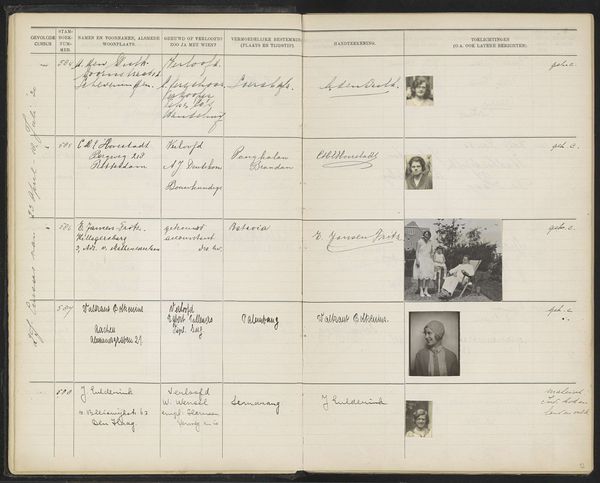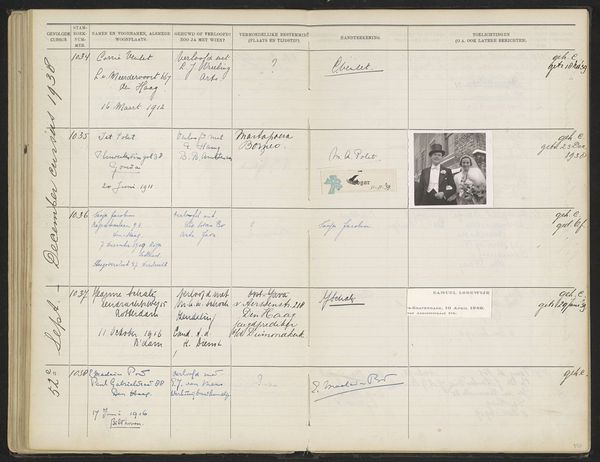
Blad 63 uit Stamboek van de leerlingen der Koloniale School voor Meisjes en Vrouwen te 's-Gravenhage deel I (1921-1929) Possibly 1927 - 1929
0:00
0:00
drawing, paper, photography
#
portrait
#
drawing
#
aged paper
#
sketch book
#
hand drawn type
#
paper
#
photography
#
personal sketchbook
#
hand-drawn typeface
#
journal
#
fading type
#
sketchbook drawing
#
genre-painting
#
handwritten font
#
academic-art
#
sketchbook art
Dimensions: height 340 mm, width 440 mm
Copyright: Rijks Museum: Open Domain
Curator: This image, titled "Blad 63 uit Stamboek van de leerlingen der Koloniale School voor Meisjes en Vrouwen te 's-Gravenhage deel I (1921-1929)," or Page 63 from the Registry of Students at the Colonial School for Girls and Women in The Hague, Volume I, captures a page likely dating from 1927 to 1929. Editor: My initial thought? It feels incredibly personal yet coldly bureaucratic. It’s that tension between the handwritten entries, the tiny photographs, and the rigid columns that gets me. It makes you think about who these women were. Curator: Absolutely. This isn't just a ledger; it’s a record of young women who attended a school designed to prepare them for life in the Dutch colonies. Consider the socio-political implications of such an institution, shaping their identities for service within a colonial framework. The act of documenting each student, even with a photograph, was about categorizing and ultimately controlling their future roles. Editor: It’s like… little portals. Each picture is a brief glimpse, an echo of a life about to unfold. I wonder what they dreamed about, heading off to these distant lands. You have these formal entries documenting name and place of birth… but who were they, really? Curator: The details provided, while seemingly objective – their place of origin, “reason for leaving,” and destination – highlight the structures of colonial mobility and expectation. The registry's meticulous record-keeping speaks volumes about the value placed on the movement and monitoring of these young women within the colonial system. Editor: Right, and there’s an almost poignant vulnerability in those handwritten signatures beside the somewhat amateur-looking photographs, probably not professional portraits. Do you think they realised they were becoming part of something much larger, this vast project of colonial administration? It's a haunting document. Curator: It is. And for historians, these individual stories embedded within the book offer a profound look into gender, education, and the complicated legacies of Dutch colonialism. Editor: Looking at this I don't see bureaucracy. I see a collection of untold stories in one old journal!
Comments
No comments
Be the first to comment and join the conversation on the ultimate creative platform.
